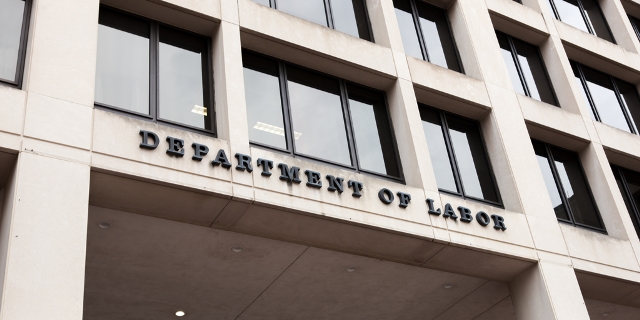

DOL Issues Initial Guidance on Families First Coronavirus Response Act and Publishes Required Model Notice
As we reported last week, on March 18, 2020, the U.S. Senate approved, and the President signed, the Families First Coronavirus Response Act (the Act). As we explained, the Act contains several provisions that will significantly impact U.S. employers in the face of the COVID-19 pandemic.
Late in the afternoon on March 24, 2020, the U.S. Department of Labor (DOL) published its initial guidance and FAQs regarding the new Act. While it seems that the implications of the Act are changing almost daily for employers, this initial guidance does provide some clarity for employers on how to implement the new Act. Below we summarize some of the key implications of the DOL’s new guidance:
Effective Date:
Surprise! While everyone thought the Act would become effective on April 2, 2020 (given the Act said that it would be effective in 15 days), per the DOL’s initial guidance, the Act will become effective on April 1, 2020.
How Do Employers Determine If They Have Fewer Than 500 Employees?
The Act applies only to employers with fewer than 500 employees. However, the Act left open a number of questions regarding how employers calculate this 500 employee threshold for coverage under the Act. In its guidance, the DOL provided several answers regarding how employers determine how many employees they have.
Specifically, the DOL’s guidance explicitly states that employers look at their employee census each time an employee requests leave. Therefore, for those companies in the “range” of 500 employees, it is possible that employees may be eligible for leave one week, but not the next depending on the employer’s census on a given day. That is, if on April 1 the employer has 550 employees, its employees will not be eligible for either of the statutory paid leaves. However, if there is a round of layoffs on April 3 that reduces the employer’s workforce to 450, those remaining employees would be eligible for leave under the Act at that time.
Moreover, to calculate employee census under the Act, employers are to count all full-time and part-time employees within the United States, including:
- All employees on leave,
- Temporary employees who are jointly employed by the employer and another company (regardless of whether the jointly-employed employees are maintained on only one employer’s payroll), and
- Day laborers supplied by a temporary agency (regardless of whether the employer is the temporary agency or the client firm if there is a continuing employment relationship).
Independent contractors are excluded from this calculation. Note the difference between employees being laid off – meaning that they are no longer employed and would not be counted and those who are furloughed – meaning that they are on an imposed and likely indefinite leave, but would likely be counted for purposes of determining the number of employees.
The DOL’s guidance also addressed related companies and how that affects the calculation of an employer’s census. Specifically, the guidance states that typically a corporation (including its separate establishments or divisions) is considered to be a single employer and its employees must each be counted towards the 500-employee threshold.
The more challenging question is whether separate corporate entities under a larger corporate umbrella, with each entity likely having separate employer identifications and which file separate tax returns and have distinct corporate management are to be aggregated for employee counting purposes? The recent guidance notes that where a corporation has an ownership interest in another corporation, the two corporations are separate employers unless they are joint employers under the Fair Labor Standards Act (FLSA) with respect to certain employees. If two entities are found to be joint employers, all of their common employees must be counted in determining whether paid sick leave must be provided under The Emergency Paid Sick Leave Act (EPSLA) and COVID-19 related leave must be provided under The Emergency Family and Medical Leave Expansion Act (EFMLEA).
Under the DOL’s joint employer rule under the FLSA, when an employee performs work for the employer that simultaneously benefits another “person” (and a corporation is specifically included in the definition of “person” under the FLSA), that person will be considered a joint employer when he/she/it is acting directly or indirectly in the interest of the employer in relation to the employee. The DOL’s joint employer rule includes a four-factor balancing test to determine whether the potential joint employer is directly or indirectly controlling the employee, assessing whether the potential joint employer:
- Hires or fires the employee;
- Supervises and controls the employee’s work schedule or conditions of employment to a substantial degree;
- Determines the employee’s rate and method of payment; and
- Maintains the employee’s employment records.
The DOL’s guidance also adopted the “integrated employer” test under the Family and Medical Leave Act of 1993 (FMLA) to determine whether two or more entities are separate, or combined, for EFMLEA leave purposes. While the entire relationship between the entities will be considered under this standard, whether multiple companies are considered as an “integrated employer” will generally be based upon four identified factors:
- Common management;
- Interrelation between operations;
- Centralized control of labor relations; and
- Degree of common ownership/financial control.
According to the DOL, if two entities are an integrated employer under the FMLA, then employees of both (or all) entities making up the integrated employer will be counted in determining employer coverage for purposes of expanded family and medical leave under the EFMLEA.
Regular Rate
Under the Act, payments to employees are generally determined by using the employees’ regular rate of pay. The DOL’s guidance provided some clarity on how that regular rate is to be calculated for purposes of the EPSLA and EFMLEA. Specifically, the DOL states that the regular rate of pay used to calculate an employee’s paid leave is the average of the employee’s regular rate over a period of up to six months prior to the date on which the employee takes leave. Moreover, commissions, tips, or piece rates paid to employees must be included in this calculation. Employers should be careful about ensuring these “ancillary” wages are captured when calculating the regular rate to avoid a later claim that the employee’s rate of pay was under-calculated.
The DOL also allows employers to compute the regular rate for each employee by adding all compensation that is part of the regular rate over the prior six months and dividing that sum by all hours actually worked in the same period.
Employers Must Pay Overtime Hours as Part of Leave
The DOL’s guidance also states that, subject to the applicable daily and cumulative caps, the EFMLEA requires employers to pay employees for hours the employees would have been normally scheduled to work even if that is more than 40 hours in a week.
Importantly, the DOL has stated that pay to employees does not need to include a premium for overtime hours under either the EPSLA or the EFMLEA. Therefore, while an employer may have to pay the employee for more than 40 hours in a workweek, they can do so purely at the employee’s regular rate.
Keep in mind, however, that the DOL emphasized that the EPSLA requires that paid sick leave be paid only up to 80 hours over a two-week period. So, for example, under the EPSLA, an employee who is scheduled to work 50 hours a week may take 50 hours of paid sick leave in the first week and 30 hours of paid sick leave in the second week.
No Double-Dipping
The DOL’s guidance explains that while there are six reasons for which an employee may take paid sick leave under the EPSLA, employees are only entitled to a cumulative total of two weeks of paid sick time under the EPSLA. Therefore, an employee may not take two weeks of paid leave because he contracted COVID-19 and then another two weeks of paid leave to care for his spouse who later contracts COVID-19.
No Good Deed Goes Unpunished
As we have been advising employers, the DOL’s guidance confirms that the Act becomes effective on April 1, 2020, and that any paid leave an employer provided its employees prior to that date (even if it was identical to the leave called for under the EPSLA or the EFMLEA) does not count towards satisfying an employer’s obligations under the Act. This would mean that voluntarily leave provided prior to April 1 (or even leave provided above and beyond what is required in the Act after April 1) is not eligible for the Act’s new tax credits and employees who have been on paid leave granted by the employer prior to April 1 will be eligible for the full complement of benefits provided by the EPSLA and EFMLEA.
EPSLA Model Notice
Under the EPSLA, employers are required to notify their employees of their rights under the EPSLA by posting a notice in a conspicuous location. On March 25, 2020, the DOL made that model notice available.
The DOL also published FAQs regarding the new notice. These FAQs are rather straightforward and generally emphasize that employers are required to post this notice in a conspicuous location, just like employers post all other required employment-related notices.
While it is not explicitly required by the Act, given the majority of the U.S. workforce is working at home and practicing social distancing, employers should strongly consider making this notice available to their employees electronically by posting it on a company intranet or even emailing the notice to employees. The DOL’s FAQs expressly state that such electronic posting would satisfy employers’ obligations to post the notice in a conspicuous location.
Post & Schell’s Employment & Employee Relations Practice is here to answer any of your questions related to the Act and is committed to keeping you informed on any actions the government takes as it relates to COVID-19 that will impact employers.
Related Industries
- Construction
- Real Estate
- Commercial Transportation
- Communications
- Death Care
- Energy and Utilities
- Banking and Financial Services
- Health Care
- Heavy/Highway & Utility Construction
- Higher Education
- Hospitality
- Insurance
- Manufacturing
- Medical Device & Life Sciences
- Municipal & Government
- Pharmaceutical
- Professional Services
- Retail


